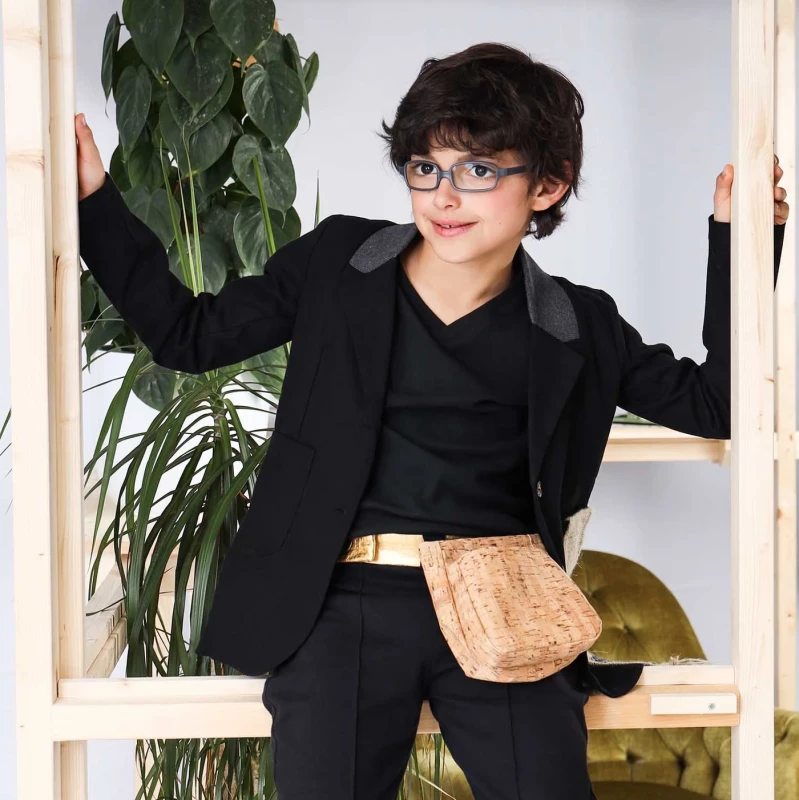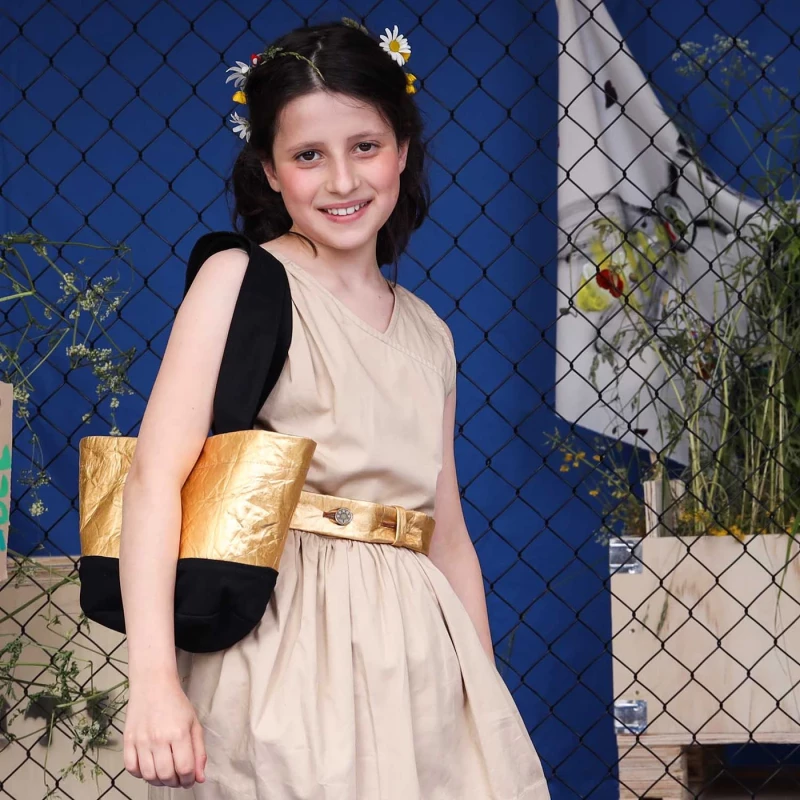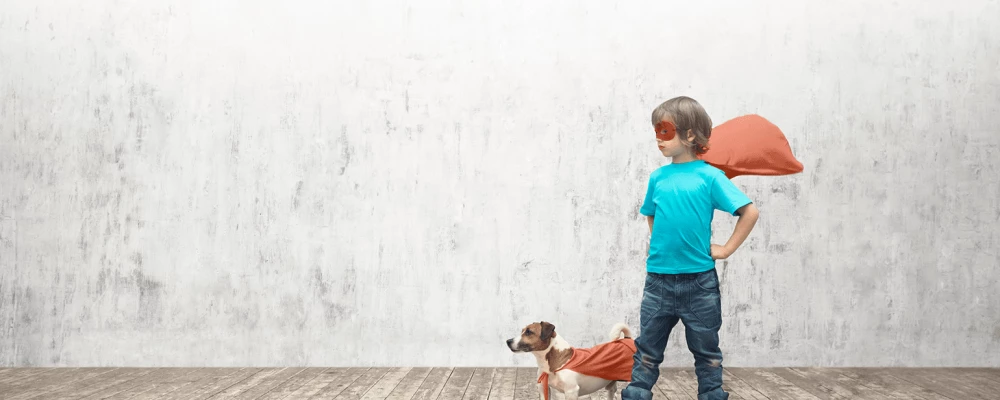
Childrenswear Brands With Successful Sustainable Business Models
While statistics focus on clothing waste overall - with WRAP's data showing "the value of unused clothing in wardrobes has been estimated at around £30 billion" and an estimated "£140 million worth of clothing goes into landfill each year" - there isn't any specifics on childrenswear. And yet, it's obvious that children grow out of clothing quickly, while transversely, the discard from adult clothing perhaps mainly comes from boredom with the style - "as a whole in the UK, the average lifetime for a garment of clothing is estimated as ~2.2 years [WRAP]".
It's for this reason that we are seeing a surge in childrenswear brands creatively extending the life of garments. Hand-me-downs were once commonplace, though re-used clothing may come with a feeling of unwant today because instead, newness signifies cleanliness. By being playful with the clothing design, implementing rental schemes, and evolving a community around sharing economy, childrenswear designers are implementing more responsible business models that are reducing waste. Minimising parents' stress, decreasing unnecessary spending and involving children in the decision-making can only help in changing habits in discard. Not only are we seeing more children's clothing brands turning towards sustainability, there is also a rise in popularity of sustainable toys.
In this article, we look at childrenswear brands that are showing sustainable, responsible and ethical business models.
Extending the life of garments
According to WRAP, a number of factors can impact on whether a garment is used for longer. These include:
- how owners look after their clothes, e.g. whether they follow washing instructions and care information
- willingness to wear the same item repeatedly, e.g. as part of different outfits, or to buy pre-owned clothing
- design features such as classic cut and fit and built-in adjustability (e.g. hidden elastic, stretch fabrics) to promote comfort and a flattering versatile fit
- technical aspects such as resilient fabrics, dyes and colours
- consumer ability to repair or alter clothes
With this in mind, we consider where emerging and established childrenswear brands sit in their methods to eliminate waste.
--
Rental
Propelled by an increased interest in sustainability among consumers, clothes rental businesses have taken off in recent years and the market is booming. We're familiar with the benefits to customers - less waste, more choice, affordable access to higher-value goods - but what's in it for brands?
The Little Loop
The Little Loop are a clothing rental business for baby clothes, with solely brand-owned clothing up for hire. Instead of wholesaling stock from brands, in this model, brands are responsible for the quality of their clothing, encouraging them to offer good, long-lasting products, and enables brands to access a circular system, where under usual circumstances there might be a barrier to entry.
They have a rental subscription platform. It costs £50 a quarter to join and in return customers about £150 worth of clothes. It’s a credit-based system, which allows for flexibility in the garments customers can access. Clothes are sent back when they want to swap or they can be kept.
Learn more about the business and how Charlotte's idea was sparked into fruition in our lesson on kids clothing rental.
UpChoose
From the outside, UpChoose looks like a simple baby clothing rental platform, but delve a little deeper and you'll soon see that its Founder set out to do more than offer a convenient and cost-effective way of accessing premium sustainable brands.
“We focus on key life moments. So we look at rethinking consumption but through the lens of key life moments, like birth.”
UpChoose is more than just a baby clothes rental service. The focus of the business is on life's key moments, aiming to transform the way people consume goods and services. Starting with birth, Upchoose offers an end-to-end service which provides customers exactly what they need in the best quality possible for the time that they need it for.
They started out with a ‘buy and sell back’ model. For the first year, customers could buy something and sell back to receive a discount on their next purchase. They then moved towards a subscription service and started working with partner brands who are high end and sustainable. The platform creates a spotlight for lesser known premium brands.
UpChoose’s customers are not just parents, but also people who are removed from the central family unity - e.g. people who buy gifts for babies and parents.
Learn more from founder Ali El Idrissi in our lesson on implementing an end-to-end service to increase wellbeing.
--
Technical
Petit Pli
Petit Pli is a wearable technology company. Inspired by aerospace engineering, Petit Pli’s continuous size adjustment is a new way of approaching garment design - one suitable to high growth rates in children. With just a top and a pair of pants, the collection is limited so that they can concentrate on the materials, fun colour schemes and that innovative construction.
Materials
Petit Pli uses technical materials that are ultra-lightweight, reinforced, rainproof and breathable because children are "extreme athletes". The fabric is created from recycled PET bottles, with the "technical" aspect coming from the ripstop weave that offers more durability. It's super lightweight, so on top of allowing the kids to move freely, it's an outfit that can be carried in your bag and popped on if it starts spitting, so that they can resume playing and eliminating the need to carry anything bulky. The fabric also means it can be quickly dried.
Design
They design in features to help with fit and fun over the 9 months to 4 years old period, including silicone grippers, adjustable wrist tabs, concealed knee patches, expandable pocket and transfer labels rather than itchy woven ones.
Overall sustainability
In terms of sustainability, it will limit the amount of new clothes bought over that crucial period, and if a parent has more than one child, they could buy multiple colour sets and share them to mix and match for further playfulness. At the end, it is still a polyester material so has limited functionality for closer-fitting garments, but then again, Petit Pli aren't looking to that market. They have taken experience from parenthood plus background in material science to create a business model that suits a specific market, and is already thriving.
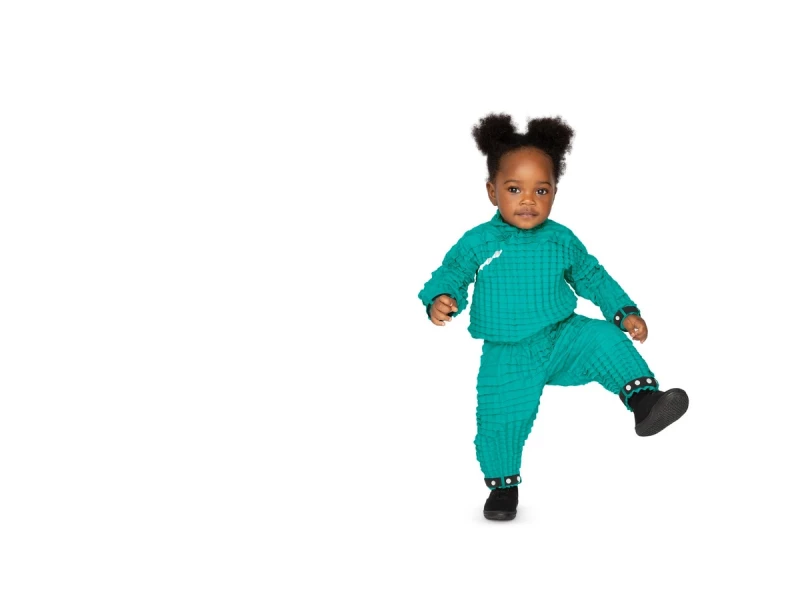
Jake and Maya
Jake and Maya is a slow fashion brand for fast-growing kids that aims to reduce textile waste with clothes that grow with them. Jake + Maya’s creative take on kid's fashion inspires a make-do-and-mend mindset by incorporating extension and mending features into the garments, as well as using environmentally friendly manufacturing processes and zero-waste pattern cutting.
In this lesson, Tze Ching shares with us the difficulties of trying to scale her labour of love, and how she leveraged that experience to create a zero-waste label aimed at improving how children (and adults) use their clothing.
“One of the biggest problems that we found with both creating kids fashion, and also having kids ourselves, is that they grow really quickly!”
--
Organic
Frugi
Founded due to an inability to find clothes that would go over a cloth nappy-wearing bum, Frugi - meaning 'Fruits of the Earth' in Latin - create durable fun kidswear from organic cotton and rPET.
Materials
So we know what organic cotton is and why it's beneficial all round. But, Frugi are certified by both GOTS and the Soil Association for their manufacture as well as their use of quality organic cotton textiles. They're pretty open with their supply chain, showcasing educational films and infographics on their website that can get kids involved. When we chatted with Frugi at Pure London, we were enamoured by the story of teaching production from the raw materials up, through exploration of farms and food; it wasn't just a case of "these are good materials so we'll use them"... there was an authenticity to the research and development.
Design
Tops and dresses are reversible for practicality and fun use of prints. The baby and toddler ranges are cut to fit over cloth nappies - something that parents have struggled with when implementing a less plastic intensive lifestyle. The 'parsnip' pants have a long cuff at the waist and ankles so they they don't ride up or down, and would also help in softeness against the tummy and ankles where skin can be prone to soreness. Adjustable button straps and waistbands ensure the clothes can grow with the child, so extending the lifespan, or even just ease of movement. And they add on appliquéd "touchy feely" bits to engage the kids in what they're wearing and improve motor skills.
Overall sustainability
There's evidence from the 15 year Frugi community that their clothing is handed down. There's even a strong resale market with garments often selling at quadruple the retail value - because they're still in such good nick and a particular print is no longer available.
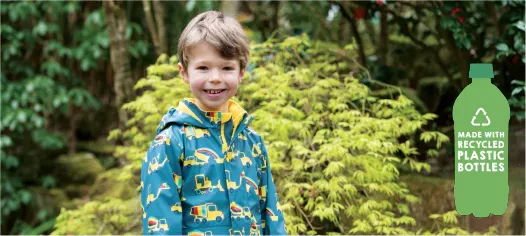
BeeBooBuzz
BeeBooBuzz was formed in reaction to the rampant gender stereotyping of the children’s clothing market. Founder Louise Morton was horrified by the sea of pink and the separate sea of blue while out shopping for kids clothes.
“You get ‘Pretty in Pink’ or ‘Pretty Princess’ [on girls’ clothing]. From a very young age girls are taught to focus that their appearance is most important.’
Learn more about BeeBooBuzz's journey in their presentation for our monthly networking event.
Materials
Organic cotton, dyed in the UK and manufactured in the UK.
Design
Each style can be easily mixed and matched with other clothing or layered up. They're what would be classed as basic - leggings, hoodies, t-shirts, vests and shorts.
Overall Sustainability
They're vibrant, easy to wear and wash, good for the skin and for planet, and champion on-shore production. As they are basic styles, they will last for a long time, can be easily passed on, and mended without much skill.
Little Green Radicals
Long-lasting childrenswear was swiftly becoming something of an oxymoron, but thanks to brands like Little Green Radicals, it's now possible to find quality, practical and fun clothing for kids and babies.
Materials
Little Green Radicals use 100% organic, Fairtrade cotton. They use two certification bodies:
- Fairtrade, i.e. the body certified by FLOCERT, comes with the Fairtrade logo
- GOTS, for organic cotton
Design
For Little Green Radicals, the overarching issue their business is trying to tackle is to divert clothing from entering landfill. Around 30% of clothing waste currently ends up in landfill (WRAP). They've set out to do this in two ways:
- They try and make a product that will last as long as possible
- They look at how they can encourage the customer to look after their product as long as possible
Overall Sustainability
“I would like our clothing to be able to last one child as long as possible, and then could be passed down from brother to sister.”
As a brand Little Green Radicals work on creating a community to encourage a dialogue between them and their customer. Along with their use of organic materials and adjustable designs, they have some great clothing that will stand the test of time and growth. In this lesson with Little Green Radicals' designer of ten years, Josie Bragg, we find out how exactly they create 'forever' clothes for fast-growing and active kids.
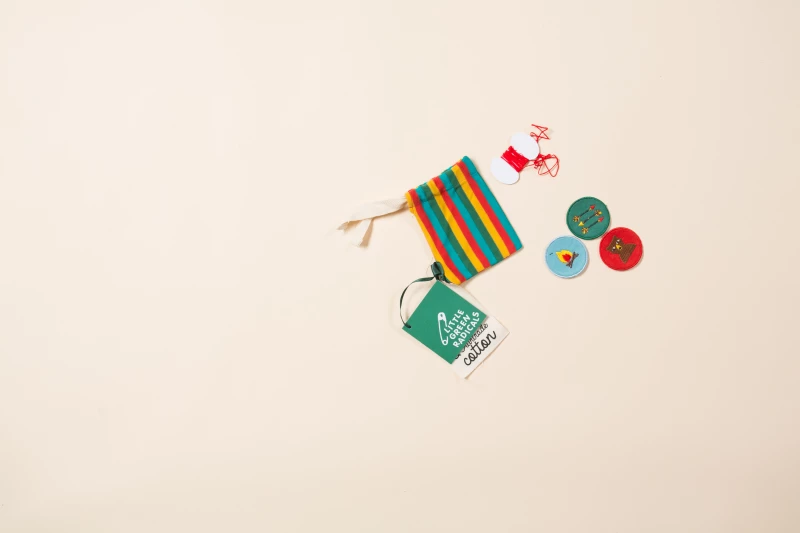
Pigeon Organics
Pigeon Organics create baby and 0-8 year old clothing from Soil Association and GOTS certified organic cotton, working with a small number of fair labour factories.
--
Sustainable synthetics
Patagonia [Kids]
We have to mention the larger brands making waves in sustainable and ethical childrenswear. But, frankly, there's not much going on. Patagonia however take their values to the end, literally, by examining the full life cycle of garments. It's without a doubt that these are costly garments for little people, but due to the durability, they have an amazing resale value, or the perfect hand-me-down.
Materials and design
With jackets made from recycled nylon, recycled down, recycled polyester and organic cotton for jersey and wovens, these are well-considered and traceable. As with all adult Patagonia garments, the details are considered, but as this is for childrenswear and the requirements are more complex, they are stripped back for ease. They also have the cutest 'hand me down' label you can write your kid's name on.
--
British Made
Roundabout
Made by founder Jo in her small South Coast studio with a limited team of seamstresses, Roundabout's clothing is vintage-inspired from a myriad of fabrics. They're not sustainable in any other sense really, but the care and thoughtful design such as reversability should ensure a hand-me-down culture and enjoyment in the clothes.
Britannical
Britannical is an award-winning luxury children's coat brand, specialising in tailored outerwear made in London. Brought on by a dissatisfaction with the synthetic, highly-priced pieces on the market, founder Rachael took to her tailoring heritage to ensure British craftsmanship and top quality materials could be brought to children to help them celebrate their childhood.

Peacheyboo
Peacheyboo is based on family. It was founded by mother-daughter duo: artist Lesley Goudman-Peachey and graphic designer Hannah Peachey-Thacker. Hannah and Lesley founded the brand because they wanted to share and help foster what they loved the most about being a family. They use British-sourced materials and make in the UK for a truly unique look.
Kingdom Of Origin
Born from a desire to craft beautiful clothes for girls, Kingdom Of Origin focus their attention on the very best of British craftsmanship. They make and source fabrics, trims, labels and packaging here in the UK ensuring their carbon footprint is minimised wherever possible. They like to share their suppliers too.
La Coqueta
Being a mother of five and coming from a Spanish family, founder of La Coqueta Celia Munoz was inspired to start her business when stylish daughter, wearing exclusively Spanish-made baby clothes, attracted attention from passers-by. They're not sustainable in credentials for their fabrics, but are made beautifully and made to last.
Totem Kids
Totem Kids are a super fun brand that create non gender specific kidswear for 2-10 years of age. They make in limited quantities in the UK, using organic cotton, reclaimed wool, and interesting handmade details.
What Mother Made
Locally-sourced fabrics, made in London to order with a zero-waste policy. We've seen founder of What Mother Made, Charlotte, out on Broadway Market selling these beautiful wares, along with in their physical shop around the corner. They also offer a general made to order service.
--
Vegan
Another Fox
Another Fox are just getting back up and running after selling out their SS20 collection, but produce cosy jersey pieces in fun prints. They are PETA vegan approved, and are plastic free, from fibres to packaging.
Infantium Victoria
Everything this brand do is exceptionally considered. They are curious, and it shows. Infantium Victoria are vegan approved, showcasing niche materials like cork, Piñatex and new Weganwool®, and designing luxurious Victoriana styles, these are kids clothes to wow.
Materials
They are vegan, with an innate instinct to look at creating regenerative clothing, so materials are organic. They achieved GOTS certification in 2019 for their factory too. They produce using materials and machinists in family-run, traceable facilities. They champion unusual, only recently commercial materials like Weganwool® to help increase the demand to the company for the sake of the holistic socio-economic benefits.
Design
Inspired by Victorian clothing where children were cherished and treated like adults, the garments reflect a sincerity with a hint of deadpan in the form of embroideries and prints. They mention in our lesson with them that they're happy when the kids go climbing trees in the clothes, as that's what they're for, and yet they are luxury pieces due to the materials used and small-scale production.
Overall sustainability
They are inquisitive, galvanised and pushy. They know their stuff. If you disregard the materials and long-standing design, the transparency and authenticity with which they run their business is enough to educate others, and this communication is also what sustainability is about.
Learn more from Infantium Victoria in these two lessons from the team behind the brand, Julia Gaydina and Dinie van den Heuvel: Changing The Mindset Around Sustainable And Ethical Fashion and Avant-Garde Organic And Vegan Certified Childrenswear.
